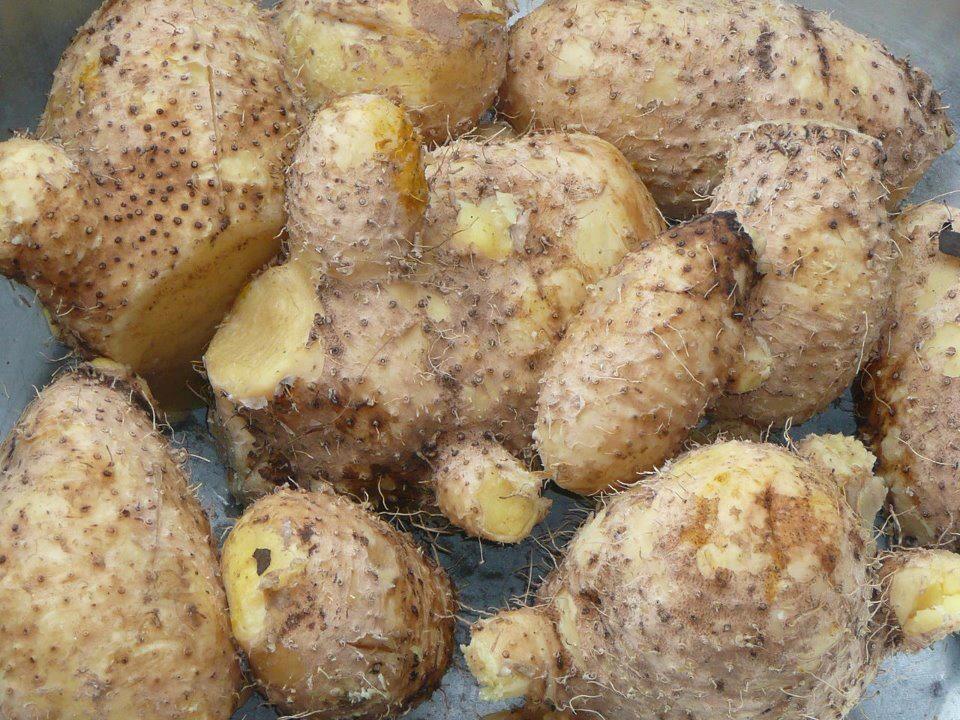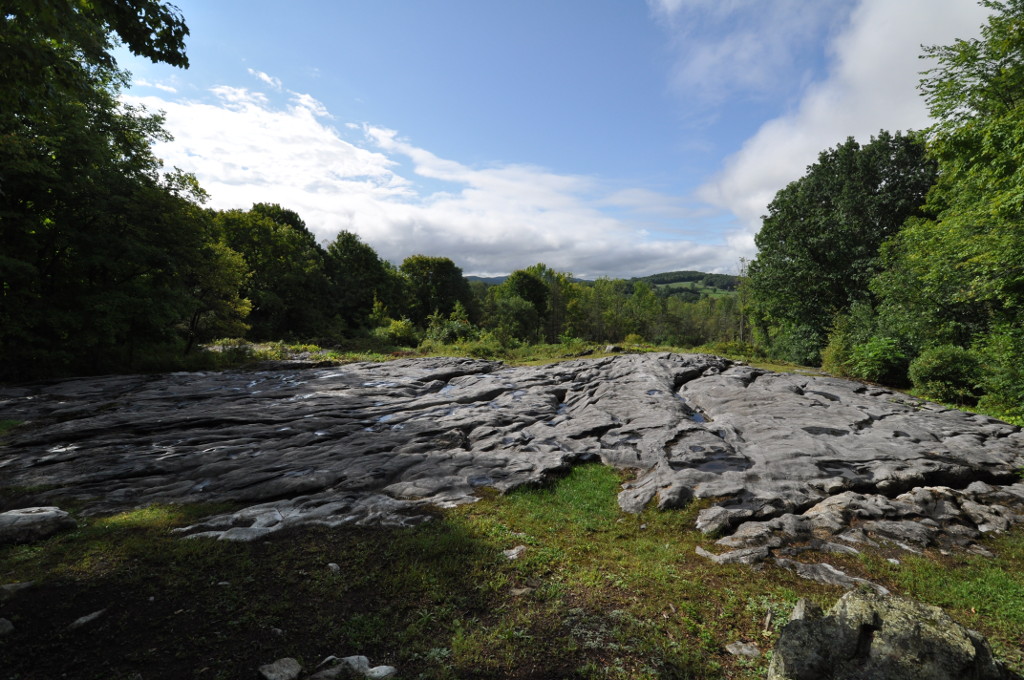|
Kako River
The Kako River is a river in the Cuyuni-Mazaruni region of Guyana and one of the largest tributaries of the Mazaruni River. 'Kako' is the Akawaio word for jasper which is found in the river. Mining Mining is prevalent throughout Guyana's waterways; there are about 144 mining claims and concessions allocated on the Kako River and its tributaries. Gold mining, done by dredging, pollutes waterways and in 2012, a series of conflicts arose between miners and Amerindians who rely on the water from the Kako River. After a third attempt was made to mine the area, an ex-parte injunction was brought against Toshao Mario Hastings. Amerindian groups defended Hastings, pointing out that the government is denying the people protection of their own land. The people of the surrounding village fear the Kako River to become polluted like the Mazaruni River. In March 2013, the United Nations Committee on International Convention on the Elimination of All Forms of Racial Discrimination expresse ... [...More Info...] [...Related Items...] OR: [Wikipedia] [Google] [Baidu] |
Mazaruni River
The Mazaruni River is a tributary of the Essequibo River in northern Guyana. Its source is in the remote western forests of the Pakaraima Mountains and its confluence with the Cuyuni River is near Bartica. As it descends from the Guiana Highlands the river runs south-east, past Issano, then northward to Bartica. The river is a source of alluvial gold. Sources The river takes source in the Roraima Plateau, three levels of sandstones and conglomerates, crowned by Monte Roraima, Mt. Roraima (). In Guyana, the two highest levels of the Roraima Plateau are known as Pakaraima, Pakaraima Mountains and Merume Mountains. The source of the Mazarunu River is in the Merume Mountains. The area is one of the very few places in the world still inaccessible. In 1992, a joint expedition of the Guyana Defence Force and Welsh Guards members was unable to reach the source of Mazaruni River, even with training, finances and equipment. Course The river drops down from each Roraima plateau throu ... [...More Info...] [...Related Items...] OR: [Wikipedia] [Google] [Baidu] |
Guyana
Guyana, officially the Co-operative Republic of Guyana, is a country on the northern coast of South America, part of the historic British West Indies. entry "Guyana" Georgetown, Guyana, Georgetown is the capital of Guyana and is also the country's largest city. Guyana is bordered by the Atlantic Ocean to the north, Brazil to the south and southwest, Venezuela to the west, and Suriname to the east. With a land area of , Guyana is the third-smallest sovereign state by area in mainland South America after Uruguay and Suriname, and is the List of South American countries by population, second-least populous sovereign state in South America after Suriname; it is also List of countries and dependencies by population density, one of the least densely populated countries on Earth. The official language of the country is English language, English, although a large part of the population is bilingual in English and the indigenous languages. It has a wide variety of natural habitats and ... [...More Info...] [...Related Items...] OR: [Wikipedia] [Google] [Baidu] |
Cuyuni-Mazaruni
Cuyuni-Mazaruni (Region 7) is a region of Guyana. Its capital is Bartica, with villages including Issano, Kartabo, Kamarang, and Imbaimadai. It borders the regions of Barima-Waini, Essequibo Islands-West Demerara and Pomeroon-Supenaam to the north, the region of Upper Demerara-Berbice to the east, the region of Potaro-Siparuni, and borders the Brazilian state of Roraima to the south. It covers an area of 47,213 km². Before the 1980 administrative reform most of the area belonged to the Mazaruni-Potaro district. Population The Government of Guyana has administered three official censuses since the 1980 administrative reforms, in 1980, 1991 and 2002. In 2012, the population of Cuyuni-Mazaruni was recorded at 20,280 people. Official census records for the population of the Cuyuni-Mazaruni Region are as follows: *2012 : 20,280 *2002 : 17,597 *1991 : 14,794 *1980 : 14,390 Communities (including name variants): * Agatash *Arau (Arau Village) * Bartica (Barteke) * Imb ... [...More Info...] [...Related Items...] OR: [Wikipedia] [Google] [Baidu] |
Akawaio Language
Akawaio may refer to: *Akawaio people The Akawaio are an Indigenous peoples of the Americas, Indigenous people who live in Roraima (Brazil), Guyana, and Venezuela. They are one of several closely related peoples called Ingarikó and Kapon. The Akawaio language is used by 5,000 to 6,000 ..., an indigenous people of South America * Akawaio language, the language of the Akawaio people * ''Akawaio'' (fish), a genus of fish {{Disambiguation Language and nationality disambiguation pages ... [...More Info...] [...Related Items...] OR: [Wikipedia] [Google] [Baidu] |
Jasper
Jasper, an aggregate of microgranular quartz and/or cryptocrystalline chalcedony and other mineral phases, is an opaque, impure variety of silica, usually red, yellow, brown or green in color; and rarely blue. The common red color is due to iron(III) inclusions. Jasper breaks with a smooth surface and is used for ornamentation or as a gemstone. It can be highly polished and is used for items such as vases, seals, and snuff boxes. The density of jasper is typically 2.5 to 2.9 g/cm3. Jaspillite is a banded-iron-formation rock that often has distinctive bands of jasper. Etymology and history The name means "spotted or speckled stone," and is derived via Old French (variant of Anglo-Norman ''jaspe'') and Afroasiatic language (cf. Hebrew language">Hebrew ' , Akkadian ''yashupu''). This Semitic etymology is believed to be unrelated to that of the English given name Persian origin, though the Persian word for the mineral jasper is also ''yashum'' ( :fa:یشم">ی� ... [...More Info...] [...Related Items...] OR: [Wikipedia] [Google] [Baidu] |
International Convention On The Elimination Of All Forms Of Racial Discrimination
The International Convention on the Elimination of All Forms of Racial Discrimination (ICERD) is a United Nations convention. A third-generation human rights instrument, the Convention commits its members to the elimination of racial discrimination and the promotion of understanding among all races. The Convention also requires its parties to criminalize hate speech and criminalize membership in racist organizations. The Convention also includes an individual complaints mechanism, effectively making it enforceable against its parties. This has led to the development of a limited jurisprudence on the interpretation and implementation of the Convention. The convention was adopted and opened for signature by the United Nations General Assembly on 21 December 1965,United Nations General Assembly Resolution 2106 (XX), 21 December 1965. and entered into force on 4 January 1969. As of July 2020, it has 88 countries as signatories and 182 countries as parties (including accessions ... [...More Info...] [...Related Items...] OR: [Wikipedia] [Google] [Baidu] |
Isseneru
Isseneru is an Amerindian settlement in the Cuyuni-Mazaruni region of Guyana, approximately 15–20 miles west of Kurupung. It is a community of about 300 mainly Akawaio people, Akawaio Amerindians, living among the hilly, forested banks of the Mazaruni River. Gold mining is a major economic activity in the area. Isseneru received land title around 2007, and demarcation was completed 2009. Known as ‘Issululu’ in Akawaio, the name means 'mass grave'. The name came from an event in which many people died from an unknown illness. Malaria is a common affliction among residents, and the remoteness affects the availability of medicine. Jaguar attacks can occur as a result of land encroachment by humans. Public services and economy The village has a multi-purpose centre, guest house, and a benab for gatherings and a recreation area. It also has a health centre, an Alleluia church that also has services for Seven Days Adventists and Anglicans, and primary school. Students from Isse ... [...More Info...] [...Related Items...] OR: [Wikipedia] [Google] [Baidu] |
Akawaio People
The Akawaio are an Indigenous peoples of the Americas, Indigenous people who live in Roraima (Brazil), Guyana, and Venezuela. They are one of several closely related peoples called Ingarikó and Kapon. The Akawaio language is used by 5,000 to 6,000 speakers. History Akawaio were known as prominent traders in the region. At the time of European contact, Akawaio lived on Guyana's coastal belt, moving inland as lands were taken for use as plantations. Akawaios, as well as Caribs, were used to capture other Amerindians as slaves as well as hunt down runaway slaves that has been brought from Africa. In Guyana, Akawaio settlements are concentrated around the upper Mazaruni River, Mazaruni, Barama River, Barama, upper Pomeroon River, Pomeroon, Demerara River, Demerara, Wenamu River, Wenamu, and upper Cuyuni River, Cuyuni rivers. Culture Religion Akawaios have polytheistic beliefs. Mythological figures like Makunaima, Kanaima, Iwarrika and Sigu are an important part of their cultur ... [...More Info...] [...Related Items...] OR: [Wikipedia] [Google] [Baidu] |
Seventh-day Adventist Church
The Seventh-day Adventist Church (SDA) is an Adventist Protestant Christian denomination which is distinguished by its observance of Saturday, the seventh day of the week in the Christian (Gregorian) and the Hebrew calendar, as the Sabbath, its emphasis on the imminent Second Coming (advent) of Jesus Christ, and its annihilationist soteriology. The denomination grew out of the Millerite movement in the United States during the mid-19th century, and it was formally established in 1863. Among its co-founders was Ellen G. White, whose extensive writings are still held in high regard by the church. Much of the theology of the Seventh-day Adventist Church corresponds to common evangelical Christian teachings, such as the Trinity and the infallibility of Scripture. Distinctive eschatological teachings include the unconscious state of the dead and the doctrine of an investigative judgment. The church emphasizes diet and health, including adhering to Jewish dietary l ... [...More Info...] [...Related Items...] OR: [Wikipedia] [Google] [Baidu] |
List Of Rivers Of Guyana
This is a list of rivers in Guyana. By drainage basin This list is arranged by drainage basin, with respective tributaries indented under each larger stream's name. Atlantic Ocean *''Amazon River'' (Brazil) **''Negro River'' (Brazil) ***''Branco River'' (Brazil) **** Takutu River ***** Ireng River *Courantyne River ** Kutari River ** Coeroeni River ** New River (South America) *** Oronoque River * Berbice River ** Canje River * Abary River * Mahaicony River *Mahaica River *Demerara River **Haiama River ** Haianari Creek **Haiakwa Creek **John River **Madawini **Kamuni **Hauraruni **Tenabu **Madabadeen *Essequibo River **Mazaruni River *** Kako River ***Kukui *** Kamarang River **** Eping River ***Issineru River *** Meamu River *** Kurupung River *** Merume River *** Puruni River ** Cuyuni River ***Akarabisi ***Arimu River ***Ekereku River ***Iroma ***Akarabisi ***Kopang *** Oko River ***Wenamu River **** Akaiwang River ** Potaro River *** Arnik River *** Kuribrong River ** Konaw ... [...More Info...] [...Related Items...] OR: [Wikipedia] [Google] [Baidu] |


